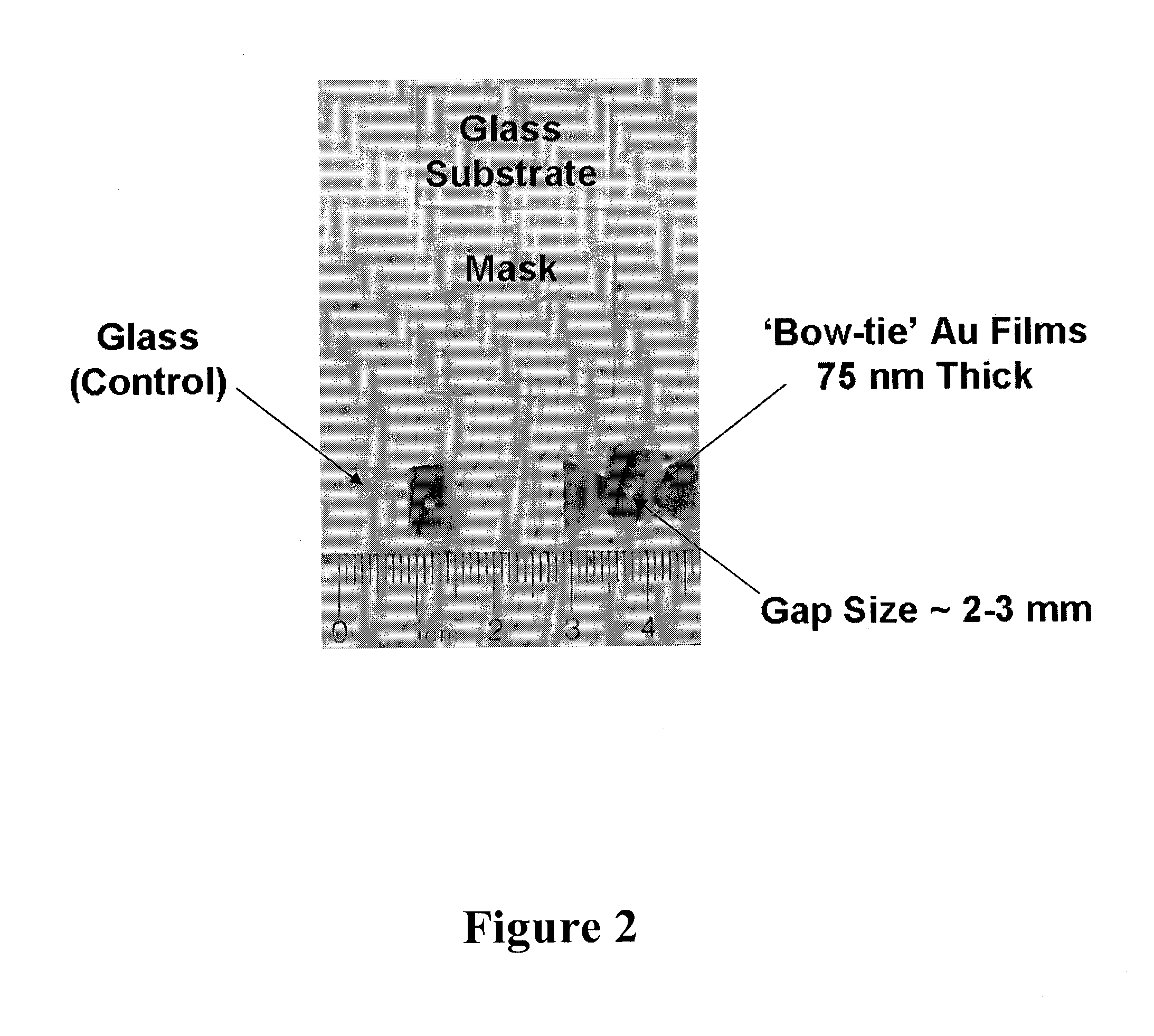Fluorescence microscope in a microwave cavity
a fluorescence microscope and microwave cavity technology, applied in the field of optical imaging system, can solve the problems of insufficient structure visibility or measurement ability of the copty system, and achieve the effect of sufficient resolution and increased chemical reaction tim
- Summary
- Abstract
- Description
- Claims
- Application Information
AI Technical Summary
Benefits of technology
Problems solved by technology
Method used
Image
Examples
examples
[0077]Methods and Materials
[0078]Premium quality APS-coated glass slides (75×25 mm) were obtained from Sigma-Aldrich. CoverWell imaging chamber gaskets with adhesive (2.5 mm diameter, 2 mm deep and 5 mm diameter, 2 mm deep for temperature measurements) were obtained from Molecular Probes (Eugene, Oreg.). Ru(by)2Cl2 salt was obtained from Sigma-Aldrich. Commercially available chemiluminescence materials were purchased from Unique Industries, Inc.
[0079]Optical Set-Up of Wide Field Microscope in Microwave Cavity
[0080]At the base of a microwave cavity (0.7 cu ft, GE Compact Microwave Model: JES735BF, max power 700 W), a 1 inch hole was drilled and subsequent exposed metal surfaces were covered with white enamel paint to prevent sparking and arcing. Using a beam expander the spot size of a 473 nm laser source was expanded to approximately 1 inch and focused to a point with a 175 mm lens at the back aperture of the objective. The incident excitation beam was reflected with a dichroic mirr...
PUM
| Property | Measurement | Unit |
|---|---|---|
| distance | aaaaa | aaaaa |
| distance | aaaaa | aaaaa |
| diameter | aaaaa | aaaaa |
Abstract
Description
Claims
Application Information
 Login to View More
Login to View More - R&D
- Intellectual Property
- Life Sciences
- Materials
- Tech Scout
- Unparalleled Data Quality
- Higher Quality Content
- 60% Fewer Hallucinations
Browse by: Latest US Patents, China's latest patents, Technical Efficacy Thesaurus, Application Domain, Technology Topic, Popular Technical Reports.
© 2025 PatSnap. All rights reserved.Legal|Privacy policy|Modern Slavery Act Transparency Statement|Sitemap|About US| Contact US: help@patsnap.com



